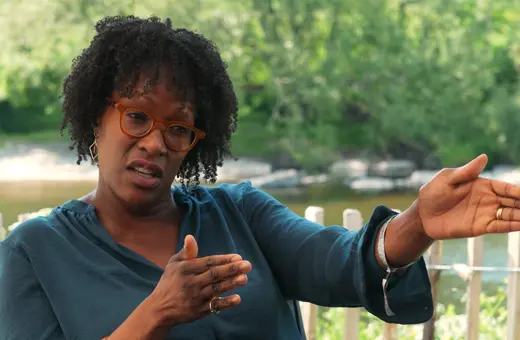Arguing that gender is a social construct has long been a feminist concern. However, in its most simplistic form, it relies on mind-body dualism and presumes a blank state on which the mind is formed. Instead we should recognise that the mind is fundamentally connected to the body, but also that the sexed body is as much a social construct as anything else argues Louise Richardson-Self.
One of the most significant conceptual distinctions for feminist activism has been the sex/gender distinction.
On the basis of such a distinction, feminists have argued that most characteristics, traits, and tendencies we typically ascribe to men and women are not actually consequences of sex—the physical characteristics of the reproductive body—but rather they are learned via socialisation—that is, they are attributes of a gendered identity.
This meant that the usual justifications for women’s subordination to men—that they were too emotional for politics, better suited to the nurturing of children, etc.—could no longer hold water. If women were not by nature subordinate to men, then there was no good reason to keep them out of power, to exclude them from the public sphere, to treat them as inferior, and so forth.
The usual justifications for women’s subordination to men—that they were too emotional for politics, better suited to the nurturing of children, etc.—could no longer hold water.
However, not all feminists accept the sex/gender distinction. Rather, they do not accept the premises which support this dichotomy. Underscoring it is a problematic ontology, a certain mind/body dualism. This ontology presumes the existence of a physical, material body that houses but is distinct from the mind, which starts out as a neutral “blank slate”.
They find this dualist view unconvincing and prefer, instead, an alternative view. Roughly, the alternative is this:
Humans are ‘embodied subjects — beings whose capacities for thought and feeling are intimately bound up with the kinds of bodies we have and the things these bodies can do.’
Since there are no ‘neutral’ bodies—they come in all kinds: differently abled, with different functional capacities, with different aesthetics—and if there is no mind/body distinction, this means there are no ‘neutral’ subjects, no blank slates. Every person’s identity—who they are—is inextricable from their physical being.
Now, superficially, this ontology looks very unaccommodating to trans and non-binary people. It seems to completely invalidate their identities. It seems to say to them “You are not really who you think you are; you are your body”. Trans and non-binary people (and allies) may reject this alternative ontology on those grounds.
And it may be the case that people who deny the metaphysical possibility trans and non-binary existence would quickly adopt this alternative ontology. It seems to affirm that men and women are naturally different, and that this difference is biological.
However, both camps misunderstand the nuance of this alternative ontology. We are not reduced to two choices, either (a) accept that the differences between men and women are straightforwardly natural (biological essentialism), or (b) maintain that the differences between men and women are purely normative, as though our physical embodiment were totally arbitrary (I’ll call it ‘basic social constructionism’).
Here is the alternative (c): we accept that living through different bodies entails qualitatively different experiences of being, and we also accept that there is no inherent meaning adhering to body features, capacities, and aesthetics — that is, our embodied differences do not necessarily inhere a socially salient identity.
The social salience of an identity—even an identity which seems to track natural biological kinds—is always contingent. Kathleen Lennon summarises this point nicely in the following quote:















Join the conversation